Posted by · 1 Comment
This week was special for us; we hosted a “ram swap”!
Our dear friend, Linda Cummings (http://guitner.blogspot.com/) from whom we purchased our first Navajo-Churro ewe and ewe-lambs came to our place to meet Shelly Gaines, a breeder from New York. They were to exchange ram-lambs (these li’l guys were born this past Spring). The swap occurred at our place—sort of a halfway point.
Now, these gals are pretty savvy when it comes to the breed. I sure learned a lot from them, such as: “clean” legs, face and belly are desirable (not “wooly”). And as much as we all love the four horns the Churro can possess, ready yourself for some bloody heads when they, inevitably, square off. Of course, the fleeces are truly important too; many breeders are picky…and rightfully so. When it comes time to market your wool, spinners seek out the best. It pays to begin to concern yourself with many of these traits at breeding time.
After the necessary paperwork was exchanged,  “Ottawa”, the stunning white ram-lamb went home with Shelly to New York and handsome little “Newman” made the trek back to Linda’s Shepherd’s Loft in Pennsylvania.
“Ottawa”, the stunning white ram-lamb went home with Shelly to New York and handsome little “Newman” made the trek back to Linda’s Shepherd’s Loft in Pennsylvania.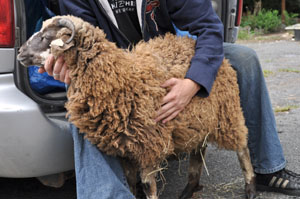
We’ll have to keep those guys in mind for the future (wink)…

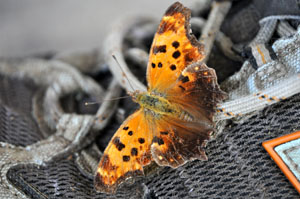 It’s not “just another butterfly.” It’s an Anglewing — so dubbed because of the angled and ragged edges of the wings.
It’s not “just another butterfly.” It’s an Anglewing — so dubbed because of the angled and ragged edges of the wings.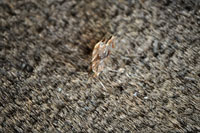 I managed to snap 30 pictures of this single Anglewing in the following 10 minutes. I’m posting three to show the varied appearances this one, specific butterfly is capable of. Remember: the three pictures are the same butterfly!
I managed to snap 30 pictures of this single Anglewing in the following 10 minutes. I’m posting three to show the varied appearances this one, specific butterfly is capable of. Remember: the three pictures are the same butterfly!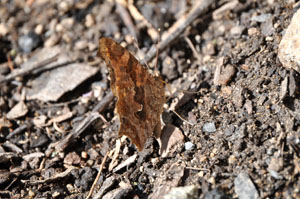
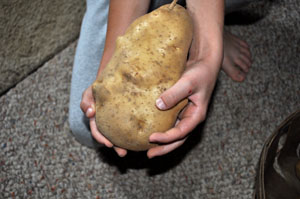 From year to year we have “volunteer” plants come up. They surprise us both with their locale (maybe an errant seed dropped by a bird) and species that it appears has wintered over.
From year to year we have “volunteer” plants come up. They surprise us both with their locale (maybe an errant seed dropped by a bird) and species that it appears has wintered over.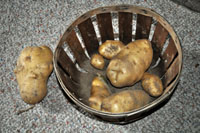 The potatoes in the basket would be a somewhat “normal” yield for a plant but what makes this extraordinary is the fact that the whopper that Natalie is holding was also produced by the same plant!
The potatoes in the basket would be a somewhat “normal” yield for a plant but what makes this extraordinary is the fact that the whopper that Natalie is holding was also produced by the same plant! from the “must.”
from the “must.”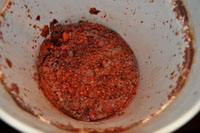
 After I took the photo of the yeast bubbles, we added handfuls of marbles to bring the liquid up into neck of the carboy (you want as little interaction between liquid and air as possible).
After I took the photo of the yeast bubbles, we added handfuls of marbles to bring the liquid up into neck of the carboy (you want as little interaction between liquid and air as possible).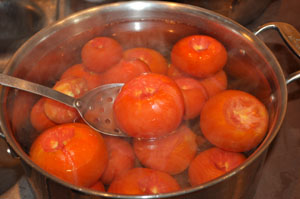
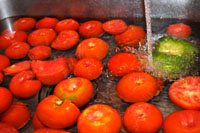 I needed it to fill out the weight of the tomatoes required in my barbeque sauce recipe. No one will ever know; shhhhh! Don’t tell…
I needed it to fill out the weight of the tomatoes required in my barbeque sauce recipe. No one will ever know; shhhhh! Don’t tell…
